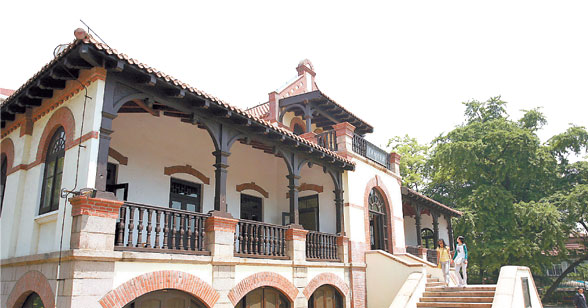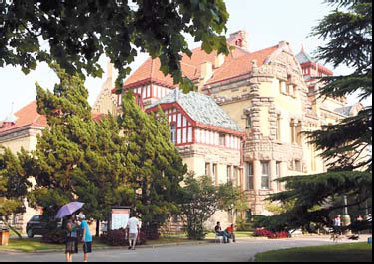History lives on in old buildings, streets
|
This special supplement is co-published by the Information Office of Qingdao municipal government and China Daily |
"I really like Qingdao. The old buildings make me feel as if I'm standing in a German setting. The architecture, old streets and small fishing villages make Qingdao a unique city in China," said Michael, an American teacher at Qingdao University.
The charm of Qingdao, which was approved by the State Council as a "Historic Cultural City" in 1994, is drawing more and more foreigners like Michael.
To preserve the charm, a Qingdao municipal historic cultural city protection committee was established in 2002 that promulgated statutes for the protection of modern and historic sites.
Qingdao went through seven distinct periods from the 19th century to the 1940s, in turn occupied by Germany, Japan and the United States. The port city absorbed and preserved their styles of architecture that are still intact, said an official from Qingdao culture bureau.
The city has declared 10 State-level sites for cultural protection, along with 30 at the provincial level and 88 local destinations.
The local government published 313 books on historic architecture with illustrations in both Chinese and English.
In 2006 a program to "rescue cultural relics and historic cultural streets", a part of the 11th Five-Year Plan (2006-10), was put forward.
|
Guest House in Qingdao in the style of a classic German castle Below: Former residence of Kang Youwei, a democratic reformer of Qing Dynasty. Ju Chuanjiang |
In Qingdao over 490 hectares of protected historic sites include Badaguan, Huiquan Bay and Taiping Bay.
The original features and surroundings of the nine traditional streets from different periods are strictly preserved and protected.
The structure and interior of 88 buildings cannot be altered.
Special protection is given to Taiqing Palace of Laoshan Mountain and Langyatai in the satellite city Jiaonan.
Memorial sites include those for major historic events and the former residence of scores of contemporary and modern celebrities, such as Kang Youwei, a democratic reformer of Qing Dynasty (1644-1910) and Lao She, a modern writer. An investment of over 70 million yuan for cultural protection is earmarked during the 11th Five-Year Plan (2006-10).
Historic cultural sites in Qingdao attracted more than 30 million visitors last year.
(China Daily 06/06/2008 page24)
















